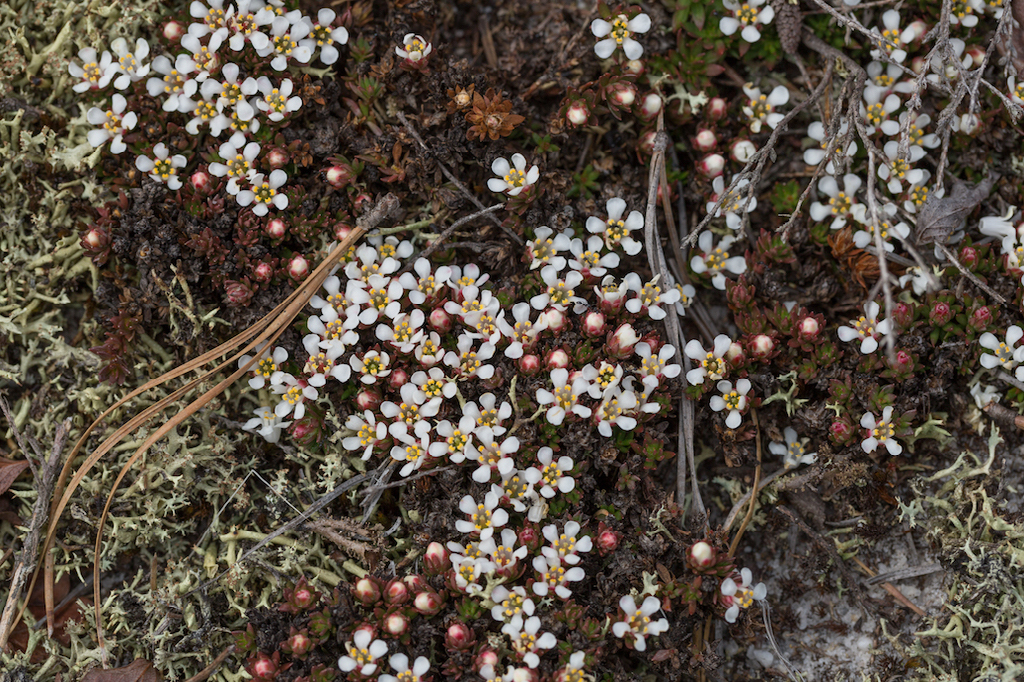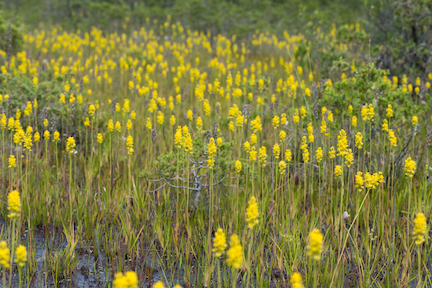Brooklyn Botanic Garden
The heat and humidity of July bring millions of Americans to the beaches, bays, and towns of the North American Coastal Plain. As families travel to their sandy destinations, they pass through an area of exceptional biodiversity, but one in critical danger. More than 86% of habitat has already been lost to development and along with it populations of rare and endemic plants. With so many people living and visiting the area, conservation strategies must take aim at limiting urban sprawl and identifying refuges or hot-spots for protection. The Brooklyn Botanic Garden is engaged in quantifying some of those hot-spots within the New Jersey Pine Barrens, the northern sliver of the Coastal Plain Province. . .
They have worked with two threatened species this year, Pixie Moss (Pyxidanthera barbulata) and Bog Asphodel (Narthecium americanum). Pixie moss needs open sandy habitat to persist and finds a home along the edges of trails and sand roads. While diminutive in stature, it has loads of charm when in bloom. Aside from plant succession, the most serious threat to this plant comes from off road enthusiasts. Bog asphodel resides in acidic bogs and swamps, whose habitat is affected by nutrient rich storm water runoff and the altered water flows of housing developments. Indirectly, the activities of sun and sand seekers are having negative impacts for these habitats and for these two species in particular.
Contributor: Uli Lorimer


